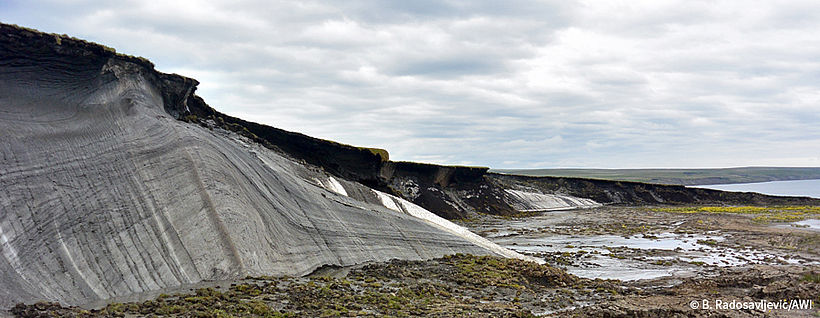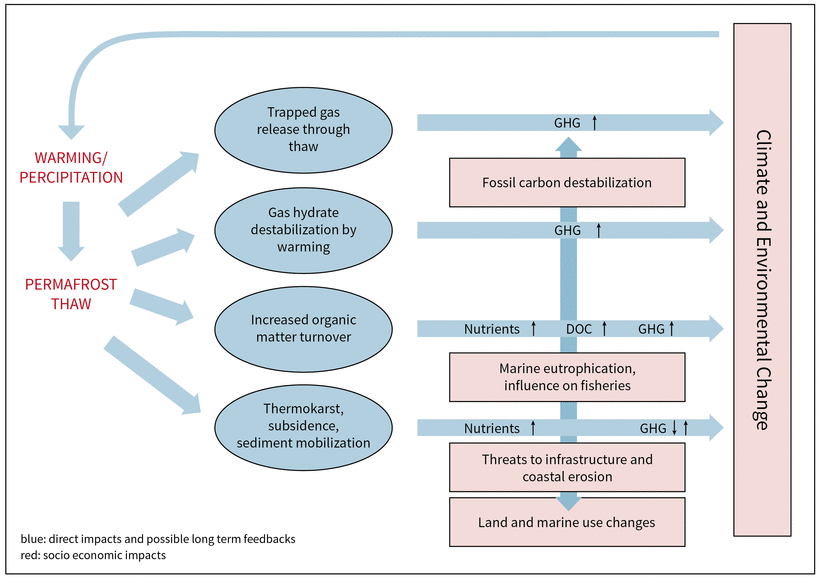
Event Chains
The event chain approach for investigating permafrost thaw aims at understanding and quantifying the contribution of dynamic thaw events to the long-term greenhouse gas emissions in the Arctic. With interlinked land, lake, coastal and offshore observations, three major hypotheses shall be addressed by MOSES event-driven field campaigns:
(1) Changing water surfaces due to intensified lake changes, sea level rise and coastal erosion lead to accelerated permafrost warming and thaw.
(2) Permafrost thaw events create pathways for gas migration and release and accelerate organic matter decay. This will make permafrost regions the dominant and rapidly increasing positive feedback to global climate change.
(3) Mapping and monitoring the temporal and spatial variability of greenhouse gas fluxes will demonstrate that changing pathways for gas migration determine the greenhouse gas contribution of Arctic permafrost to the atmosphere.


